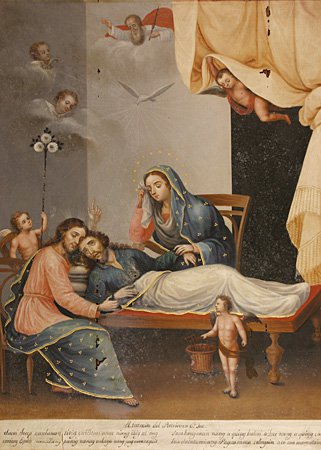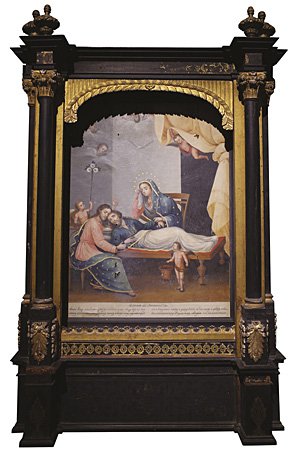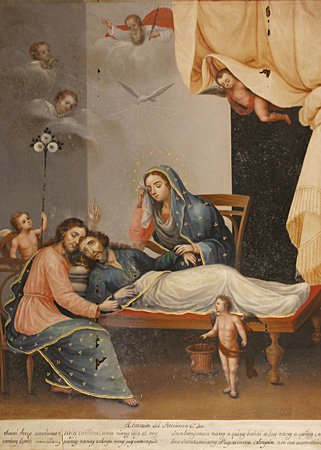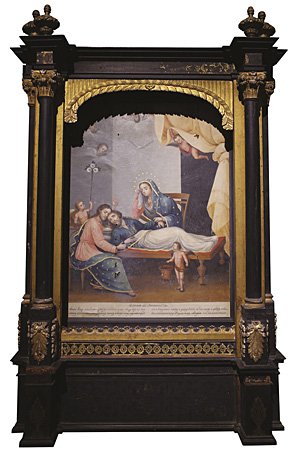Cultural Center of the Philippines
ENCYCLOPEDIA OF
PHILIPPINE ART
El Transito del Patriarca San Jose
(The Passing Away of the Patriarch San Jose) / Ca 1840s / Oil on canvas / 68 x 51 cm / Artist: Justiniano Asuncion / Bangko Sentral ng Pilipinas collection
Tradition around the devotion to San Jose assigns the euphemism “transition” to mean the passing away of the man whom Jesus honored as his father. The theme was a favorite subject of Philippine paintings from the mid-17th to the late 19th century. The “transito” was de rigueur in the private chapels of stately homes or in the devotional corners of less affluent houses. This is due to the fact that San Jose was invoked for a happy death, as tradition states he was assisted in his deathbed by no less than Jesus and the Blessed Virgin.
Extremely filial, Filipino artists have thus been fascinated with the subject, doing various interpretations that show how solicitous Jesus was to his dying father while Mary looked on with pitiful sorrow. The above version situates the death scene almost in a Philippine setting, if only for the wooden furniture used. The legs of San Jose’s bed, for example, are in the style of a balustrade post ending in a ball-and-claw design.
The execution is less fine than Damian Domingo’s but employs the miniaturistic technique he learned under Domingo’s tutelage. Evidently, the anonymous painter for this scene saw a set of Domingo’s album of costumes, for Mary’s pose seems to have been inspired by the lady Domingo portrayed in Una India Vestida de Duelo (An Indian in Mourning Clothes). A young angel holding Joseph’s basket of carpentry tools is reminiscent of the young boy painted by Domingo in the title page of his albums. All details in the Transito have been painstakingly limned to the last detail, including the fleur-de-lis patterns in gold leaf distributed on the saintly robes and San Jose’s blanket.
Written by Santiago A. Pilar



